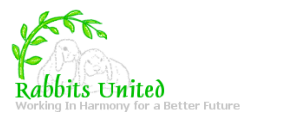Hiya,
Here`s some information i`ve found for you on treated pine, it explains about both types of treatment. Basically it says it`s safe but explains all about it for you.
TREATED PINE
TRADITIONAL PRESERVATIVE
The timber industry has long used the chemical preservative, CCA, in prolonging the life of pine
products, such as for fence palings, decks, retaining walls, posts and poles. CCA is the abbreviation
used for Copper Chrome Arsenate. The copper component provides long term resistance to fungal
attack. The arsenate (from arsenic) provides protection from insects, such as termites. The chrome (from
chromium) helps to fix the copper and arsenate into the timber, to render them insoluble.
PROBLEMS WITH CCA-treatment
Doubt as to the use of CCA-treated pine has arisen from evidence that the chemicals can actually leach
into surrounding soils; or into water, in the case of the timber used marine environments. According to
the WHO (World Health Organization), arsenic is “acutely toxic and a known carcinogen”. Particularly
disturbing may be the fact that it also sticks to skin after contact through touching. This is of concern
when there are young children at risk, when CCA-treated pine has been used such as in childrens’
playgrounds, on timber fences or as sandpit surrounds. It is recommended that hands are washed
thoroughly after working with the timber, which is not something that children can be relied upon to do,
especially if they are at the age when they tend to put non-food objects indiscriminately in their mouths.
WHAT’S NEW
An alternative is now available. A new timber preservative,
approved under the Australian Standards and by the
Australian Pesticides and Veterinary Medicines Authority,
offers the same level of protection from decay fungi, termites
and wood borers as the traditional CCA treated timber,
without the use of Arsenic or Chromium. Known as ACQ, this
wood preservative is suitable for outdoor used in above
ground and in ground contact exposures.
ACQ has the active ingredients of Copper, used against
fungi; and a Quaternary Ammonium Compound (DDAC), to
protect against termites and wood boring insects. The DDAC
component and other similar compounds are also commonly used in household products as
preservatives and for the control of fungi and bacteria.
PRECAUTIONS WITH TIMBER USE
Both treated timbers are easy to work with, though the usual precautions should be followed. These
include
· Wearing gloves to reduce the risk of splinters
· Wearing a dust mask and eye protection when machining the timber
· Washing hands thoroughly with soap and water after working with the timber
· Disposing of offcuts and scraps by burial in landfill and NOT by burning.
HTH,
Su.x

